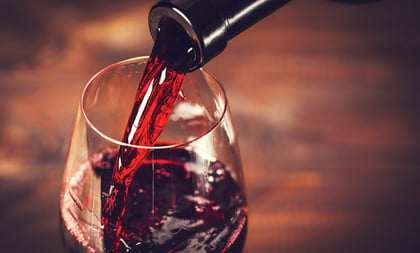Wealthy people are ideal prospects. Many are also wine fans. The magazine Wine Spectator’s audience profile is people with an average household income of $322,959 and a net worth of $2.1 million. Wine fans are often enthusiastic, eager to learn and share. You can use wine analogies to get across points about investing fundamentals.
10 Useful Examples
1. Blue chip names everyone wants to own. Bordeaux is the world’s most collectable wine region. Back in 1855, Napoleon III thought it would be a good idea to have a classification system for the best wines on display at the 1855 Exhibition in Paris. There are basically 62 wines. The “1855 Classification” has barely changed in 160-plus years. Meanwhile, fortunes have waxed and waned. Management has changed. Lots is going on under the surface.
Lessons Taught: Past performance is no guarantee of future results. Some rest on their laurels. Others bring in new management. It often takes a while for changes to show results, resulting in bargains for quality before everyone gets on board.
2. Diversification is important. (1) Bordeaux is made primarily from Cabernet Sauvignon and Merlot. Cabernet Franc, Petit Verdot and Malbec can play a role. Weather is important. Grapes ripen at different times. Rain and hail can come suddenly. In some years Merlot might fare better than Cabernet. The winemakers will adjust accordingly.
Lessons Taught: In investing, sometimes large-cap growth is out of favor while large-cap value shines. A money manager with latitude can shift focus to the areas that are doing better.
3. Diversification is Important. (2) Red Burgundy wine is almost always made from the Pinot Noir grape. Its whites are from Chardonnay. If that grape type has a tough time that year, the winemaker has a problem.
Lessons Taught: Single-industry funds or single-country funds can look attractive, but if the tide turns against them, they have nowhere to hide unless they go to cash. Most investors want their managers to be almost fully invested constantly, because a down market can suddenly turn into an up market.
4. Sometimes you think you are diversified, but you aren’t. Rosé wine has been getting hotter and hotter for years. It’s incredibly popular. Your client might have several favorite producers. They swear by them. They secretly wonder why they taste the same. Most Rosé wine from the Provence region of France is made from Grenache. Cinsault, Syrah and Mourvedre are also in the blend, in lesser amounts.
Lessons Taught: Many investors buy mutual funds. Many like the technology sector. There are about half a dozen big name stocks. Most are represented in the top holdings of many funds. You need to look under the hood and see how much diversification you are actually getting.
5. It’s all about time in the market. Fine Bordeaux wines traditionally went through a “dumb” phase. They might be tasty at first, then they close up for a couple of years, followed by “Wow! That’s what all the fuss is about.” The standard for Bordeaux wines is they used to require 10 years of aging to come around.
Lessons Taught: Buy good managers, then step back and let them do their job. Buy established stocks that have weathered good times and bad, then let management run the company. Don’t attempt to time the market or day trade.









 July 11, 2018 at 11:00 AM
July 11, 2018 at 11:00 AM












 Bryce Sanders is president of Perceptive Business Solutions Inc. He provides HNW client acquisition training for the financial services industry. His book, “Captivating the Wealthy Investor,” can be found on Amazon.
Bryce Sanders is president of Perceptive Business Solutions Inc. He provides HNW client acquisition training for the financial services industry. His book, “Captivating the Wealthy Investor,” can be found on Amazon.